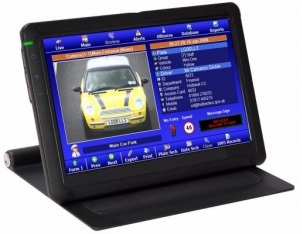Many cities globally continue to become more congested, driving increased investment into off-street parking facilities. In recent years, automated number plate recognition (ANPR) cameras and software have started to be used as part of the overall solution which also includes barriers, payment machines, and loop detectors. The main use of ANPR equipment is to alleviate issues related to ticket payments, where a license plate can be looked up in the system to verify entry times, or for security purposes. However, what if ANPR equipment was the sole solution to automate parking structures? According to IHS Research analysts this trend is already visible.
Parking barriers and loop detectors are widespread and have been used for many years, but eliminating the use of these products in favour of barrier-free parking is slowly starting to gain traction. Free-flow parking can use ANPR technology to scan plates of cars as they enter and exit a facility, offering real benefits to parking lot operators and customers. One benefit of barrier-free parking is it can eliminate bottlenecks at entrances and exits.
Another benefit is it can be extremely expensive to build entry/exit lanes. With faster throughputs, fewer lanes would be required because cars would be able to easily move in and out of the structure. The additional space could be used for more parking spots, creating the possibility of lower costs and higher returns for parking lot owners.
Today, the main barriers to widespread acceptance free-flow parking are ANPR equipment prices and the possibility of lost payments. Parking facilities that use ANPR cameras today typically install low-cost solutions because parking barriers are present. Cars are required to come to a complete stop in the entrance and exit lanes, which makes a low-end product adequate enough to scan, read and produce an image of the license plate. If the barriers are removed, cars would be in motion when driving through the lanes, which requires a better and more expensive product.








